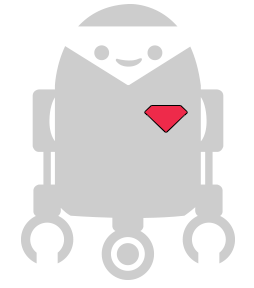"use strict"; var Cylon = require("cylon"); Cylon.robot({ connections: { sphero: { adaptor: "sphero", port: "/dev/rfcomm0" } }, devices: { sphero: { driver: "sphero" } }, work: function(my) { var color = 0x00FF00, bitFilter = 0xFFFF00; console.log("Setting up Collision Detection..."); my.sphero.on("dataStreaming", function(data) { console.log("dataStreaming:"); console.log(data); }); my.sphero.on("collision", function() { console.log("Collision:"); color = color ^ bitFilter; console.log("Color: " + (color.toString(16)) + " "); my.sphero.color(color); my.sphero.roll(128, Math.floor(Math.random() * 360)); }); my.sphero.detectCollisions(); // To detect locator, accelOne and velocity from the sphero // we use setDataStreaming. // sphero API data sources for locator info are as follows: // ["locator", "accelOne", "velocity"] // It is also possible to pass an opts object to setDataStreaming(): var opts = { // n: int, divisor of the max sampling rate, 400 hz/s // n = 40 means 400/40 = 10 data samples per second, // n = 200 means 400/200 = 2 data samples per second n: 200, // m: int, number of data packets buffered before passing to the stream // m = 10 means each time you get data it will contain 10 data packets // m = 1 is usually best for real time data readings. m: 1, // pcnt: 1 -255, how many packets to send. // pcnt = 0 means unlimited data Streaming // pcnt = 10 means stop after 10 data packets pcnt: 0, dataSources: ["locator", "accelOne", "velocity"] }; my.sphero.setDataStreaming(opts); // SetBackLED turns on the tail LED of the sphero that helps // identify the direction the sphero is heading. // accepts a param with a value from 0 to 255, led brightness. my.sphero.setBackLed(192); my.sphero.color(color); } }).start();




